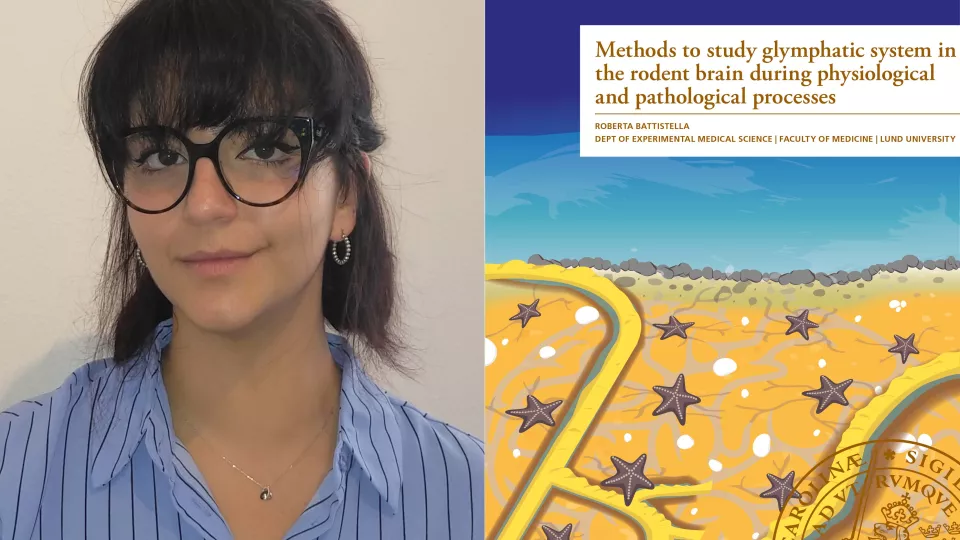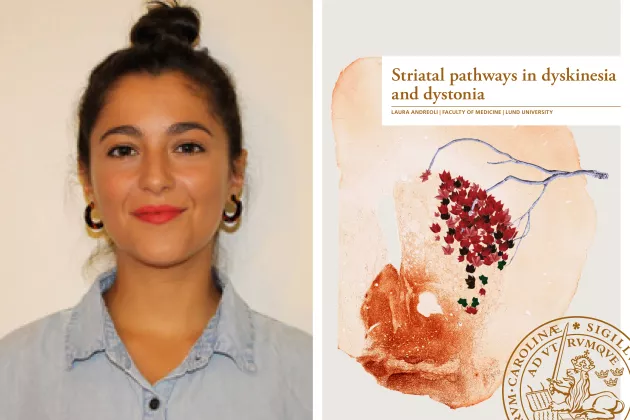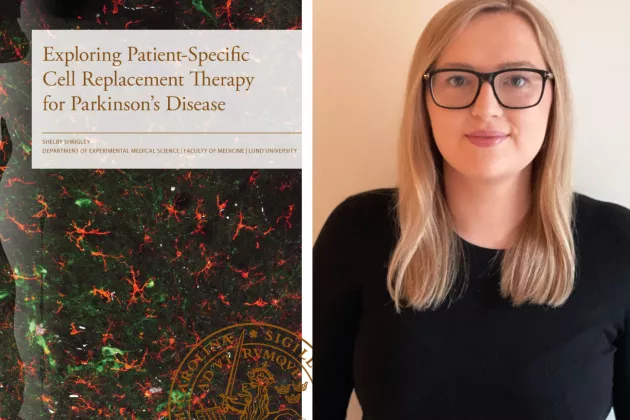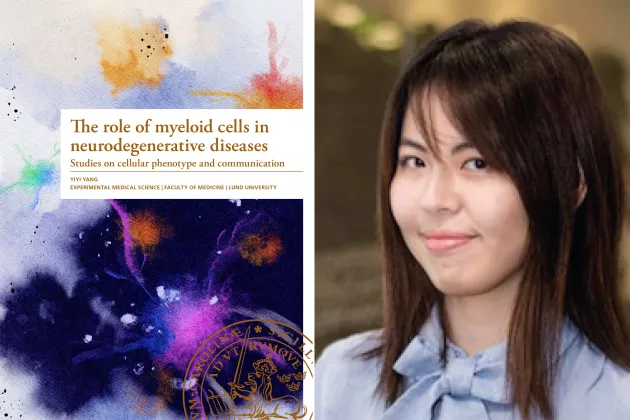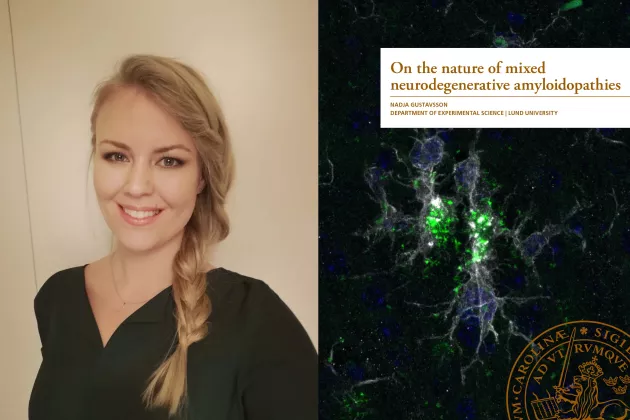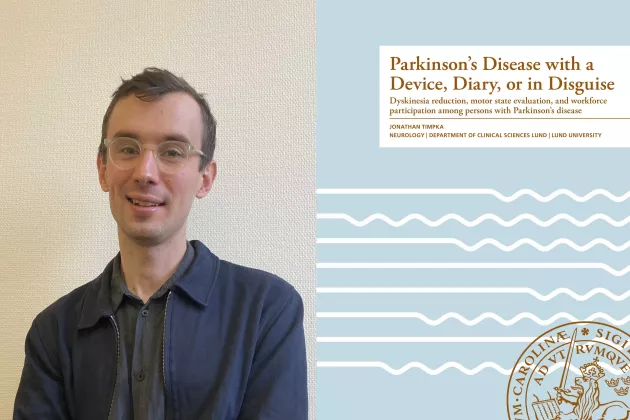Tell us about your research!
“The glymphatic system removes waste products from the brain with the help of cerebrospinal fluid (CSF). It is most efficient during our sleep, emphasizing the importance of healthy sleep habits. In short, this is how the glymphatic system works: the cerebrospinal fluid enters the brain parenchyma by flowing into a space surrounding brain-penetrating arterial vasculature. This is referred to as the perivascular space. The movement into the brain is facilitated by a protein permeable to water, known as aquaporin-4, expressed by star-shaped cells in the brain called astrocytes. Then, the CSF rinses through the nervous tissue, and eventually washes away waste products while leaving the brain.
When I came to Iben´s group to start my Ph.D. project, the glymphatic system had only been known for about five years. Everything was new and undiscovered. Since the system removes debris from the brain, we thought it could be implicated in neurodegenerative disorders such as Parkinson’s disease, since that is linked to the accumulation of aggregated forms of the protein a-synuclein. But yet, standardized protocols for studying the system were still lacking. So that is what my thesis work has been all about; developing standardized methods for studying of the glymphatic function on a macroscopic and microscopic level. Several of these methods have then been implemented to investigate the role of the glymphatic system in Parkinson’s disease.
I used two different mouse models for Parkinson’s disease, the unilateral 6-hydroxydopamine model and preformed fibrils bilateral injections into the striatum. Injection of fibrils mimics the pathological accumulation of a-synuclein seen in patients, with milder effects on the neurodegenerative phenotype. The 6-hydroxydopamine, on the other hand, disrupts dopaminergic signalling and represents the more advanced stages of the disease. Together, these two models complement each other to recapitulate more features of the human pathology.”
What did you discover?
“I observed that one subgroup of the mice injected with preformed a-synuclein fibrils developed more deficits, despite milder a-synuclein accumulation in the brain. Interestingly, these mice also had affected cerebrospinal fluid flow dynamics, suggesting impaired glymphatic function. So it seemed like lower levels of a-synuclein inclusions in the brain were linked to a more advanced stage of PD pathology, or a more aggressive disease progression, together with a compromised glymphatic function, at least in some of our mice.”
So, would you say that glymphatic dysfunction may lead to Parkinson’s disease?
“Well, it is far too early to make such claims based on observations in our subgroups, but in any case, I would rather say that glymphatic dysfunction may accelerate the progression of PD. Even though I think the preliminary results are promising, they need to be confirmed with further studies and in patients. But some studies suggested that the glymphatic system is less efficient with ageing, so I would not be surprised if this also affects the extent of pathologically aggregated proteins that remain in the brain.”
Why is your project important?
“The glymphatic system has only been known for about a decade. When I started, we lacked established protocols to investigate the functionality of the system. And standardized methods are essential to facilitate the replication of findings between different studies, something that is a cornerstone of the scientific method. I would say that my thesis project has contributed to methods development, which may eventually speed up other discoveries. For example, in my thesis, I applied such methods to investigate glymphatic function in PD pre-clinical models, but of course they can be utilized in several other experimental conditions.”
How did you end up at MultiPark?
“After I completed my master’s thesis in Neurobiology in Rome, investigating compensatory mechanisms supporting memory in Alzheimer’s disease mouse models, I saw an international advertisement for a Ph.D. project. I contacted the research group led by Anja Meissner, but during that meeting, we realized that the project I applied for had more of a cardiovascular focus, while my interest was strongly neuroscience oriented. She then got me in touch with Iben Lundgaard, who also was recruiting for a project about the glymphatic system. Then it all began.”
What did you like the most during your thesis work at MultiPark?
“The freedom as a Ph.D. student suits me well. It is stimulating to think about your project and what to do next. Being part of MultiPark facilitates getting in touch with many people with similar research interests but a slightly different focus. Altogether, it creates an overlapping network of knowledge that allows you to grow as a scientist. For example, the lunch seminars offered by MultiPark offer a vibrant environment where it is easy for young researchers to share experiences and knowledge.”
What have been the most challenging during your Ph.D.?
“The Parkinson's disease project has been very long, as I have been working on it since the start and it is still not completely finished. Dealing with negative data is always challenging and definitely makes it more difficult to publish, even though I believe negative data are as important as positive data. Concerning the PD project, I mainly collected negative data, suggesting that glymphatic function was not affected in PD. However, in the end, it generated some interesting findings. I cannot make big claims at the moment, but the new data provided a new key to understanding the involvement of the glymphatic system in the progression of PD pathology, confirming that it is worth investigating this further.”
And the most rewarding?
“Putting everything together in the thesis has been very rewarding. I felt very proud when it was done. But of course, setting up all the models for my experiments and carrying out the PD project was very rewarding too.”
What do you like to do when you are not at work?
“I enjoy spending time with friends, reading, cooking etc.”
What advice do you want to give to new Ph.D. students?
“To remember also to have fun and enjoy the journey. There will always be things not working, and you may ask people for help. Most people are more than happy to help you and share their knowledge. You are never alone.”
What happens after your defence?
“Christmas break! I need to recharge my batteries and make a decision of whether I would like to continue in academia or move to industry.”


